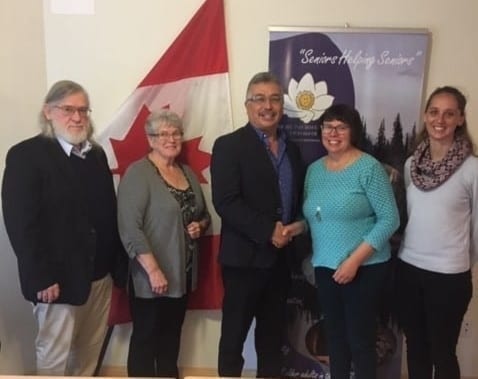The issue: Age-friendly city
We say: Much work to be done
Yellowknife isn't the rough-and-tumble mining town it was born as.
Like the increasing number of senior citizens choosing to remain or relocate to the city after retirement, the decades have mellowed the home of the gold rush in the Northwest Territories into a place more suitable for people in their golden years.
But there are miles to go for the capital before it can consider itself an age-friendly community.
Now, Northerners aren't in love with being told to look at this southern Canada city or that and wise up but there are success stories elsewhere that could be worth a read up here.
The most dramatic is Elliot Lake, Ont., which has in common with Yellowknife the Canadian Shield and the cruel boom-bust mining cycle. In the late 1980s and early 1990s, the one-time so-called uranium capital of the world about six hours northwest of Toronto was dealt a near-fatal blow when the bottom fell out of the price of the radioactive metal used as fuel in nuclear power plants.
The population exploded between the 1976 and 1981 censuses, more than doubling to 16,723, then crashed back below 15,000 in 1991 and continues to fall (it was 10,741 in 2016).
But it would have been worse if not for a community-wide effort to reinvent the city into a destination for retirees. A corporation, Elliot Lake Retirement Living, was created to buy up vast swaths of the then-vacant apartment buildings and houses that once were home to young miners and their families and convert them to senior-friendly units. It owns more than 1,000 apartments, plus semi-detached houses and bungalows.
The marketing pitches Elliot Lake as the most affordable retirement community in Ontario, and it rings true with rents of $545 per month for a one-bedroom apartment or $651 for two, or $885 for a two-bedroom semi-detached house (with the yard work covered by the company!).
That must look like a typo to a Northerner, and obviously those rents are impossible to reproduce here without a steep government subsidy, but there are other areas where Yellowknife could score points according to the inspiration for age-friendly initiatives in Canadian cities, the World Health Organization's (WHO) Global Age-Friendly Cities Project, which emphasizes eight areas: outdoor spaces and buildings, transportation, housing, social participation, respect and social inclusion, civic participation and employment, communication and information, and community support and health services.
A great start would be the construction of a brand new replacement for the Ruth Inch Memorial Pool: seniors and watersports tend to be fast friends. Another positive note could be struck by the sound of equipment moving toward the former Stanton Hospital building to complete its much-anticipated conversion to a long-term care facility.
This isn't to suggest Yellowknife is without its enticements. There's the NWT health card and its exceptional benefits when compared to those issued by the provinces. And Avens has an encouraging update in this week's Yellowknifer, with its leadership indicating construction on 102 units of affordable housing for seniors could start this spring, with doors opening in 2022.
There is a lot of work the city could do, including getting rid of that accursed set of stairs at City Hall and replacing them with an accessible ramp, but many things are within the jurisdiction of the GNWT, particularly when it comes to direct health care services (like the hospital and long-term care facilities) and peripherals like medical equipment retailers and pharmacies.
There's a national standard for age-friendly communities that is "actively" promoted by all 10 provinces but none of the three territories, according to the Public Health Agency of Canada. Yellowknifer would ask why the governments in the NWT, the Yukon and Nunavut are not on that list: seniors who want to live here in order to be closer to their children or are forced to because they can't afford to move away should not have to view the 60th parallel as a barrier.
In fiscal 2020-21, the GNWT will receive $33,321 from the federal government for every NWT resident.
Also worth noting, the financial status of senior families, defined as having a primary breadwinner who is at least 65 years of age, has been improving steadily since 2012, to a median after-tax income of $61,200 in 2017, up $2,500 from the year before.
Those numbers are just the beginning of the impact every new senior would have here, and form one more good reason why the territory and Yellowknife in particular should feel motivated to continue to evolve from the good old days and aspire to offer more to people who could help build the North's future with their invaluable wisdom – and their disposable income.
